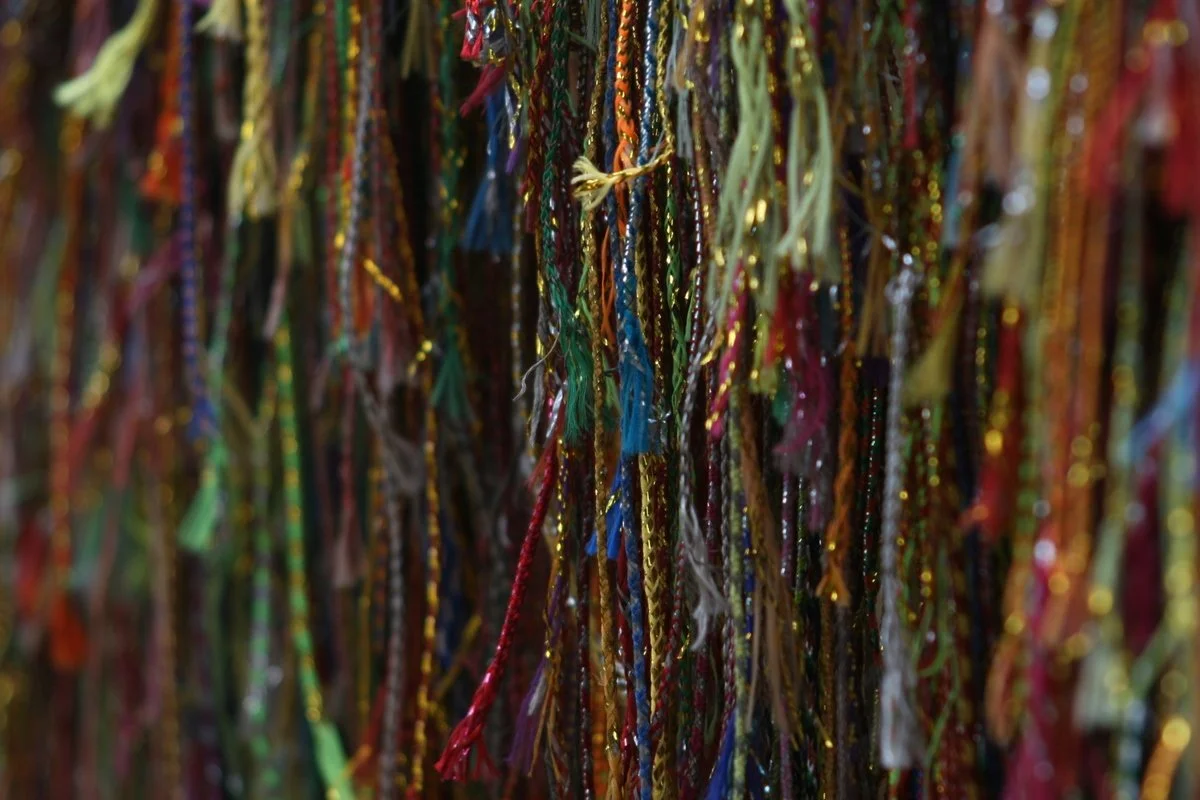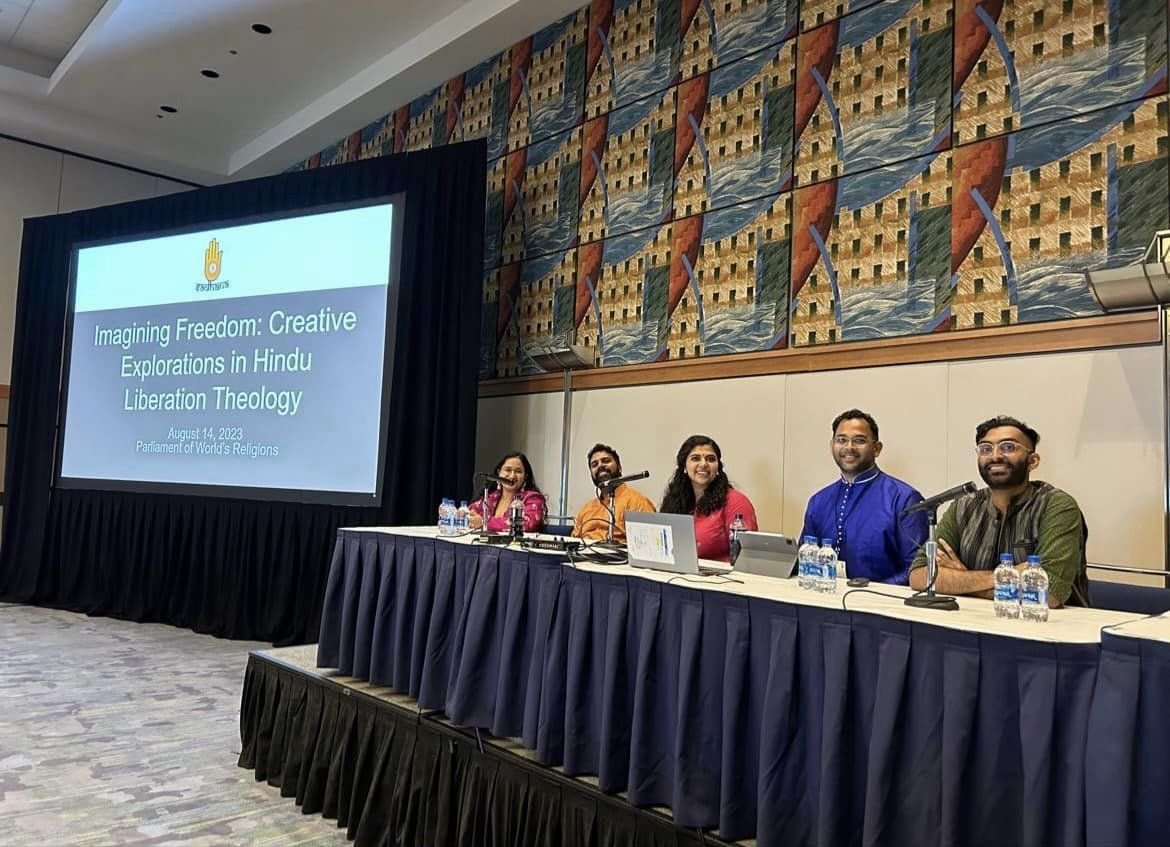INTRINSICALLY DIVERSE
The True Meaning of Engaging Difference and Diversity
by Shashank Rao
ये नमस्यन्ति गोविन्दं ते नमस्यन्ति शङ्करम्।
येऽर्चयन्ति हरिं भक्त्या तेऽर्चयन्ति वृषध्वजम्॥६॥
ये द्विषन्ति विरूपाक्षं ते द्विषन्ति जनार्दनम्।
ये रुद्रं नाभिजानन्ति ते न जानन्ति केशवम्॥७॥
Those who worship Govinda also worship Śaṅkara
Those who devotedly propitiate Hari also propitiate Vṛṣadhvaja. Those who hate Virūpākṣa hate Janārdana
Those who do not know Rudra do not know Keśava.
-Śrīmad Rudrahṛdaya Upaniṣad 6-7
Over the last year or so, I interned with the Parliament of the World’s Religions as an Outreach Associate, particularly concerned with Hindu as well as broadly South Asian participation at the convening. I hoped to engage the constructive dimensions of terms like “interfaith” and “multifaith,” to articulate an imperative for interreligious engagement for the Hindu community.
I often use the above passage to facilitate conversations about interreligious dialogue and community building, as it helps to probe the nature of such activities. What exactly do we think we are doing when we interact in the presence of religious difference? The Upaniṣad teaches us that there is a real continuity and unity between two ostensibly different deities, even in worship. The workings of heart and mind alike engage all divinities even as they focus on one.
While this is true, the passage can and should also be read for the way it connects devotees. One who worships Govinda exists in relationship to one who worships Śaṅkara. Even if all beings are one at the level of ultimate reality, something like interfaith engagement takes place well within the realm of difference and distinction. Our inter-religious relationships are in some sense made possible by difference, a point which I believe needs to be taken seriously.
Acknowledging Diverse Agendas
I attended and facilitated a number of panels at the Parliament, including one about interfaith solidarity between South Asian Americans of faith. At this panel, I convened three leaders from different South Asian American faith communities (Hindu, Muslim and Sikh) to discuss the relevance of the foundational ethical document for the Parliament, the Global Ethic, to their work. While no one took issue with the value of the principles raised, such as non-violence or truthfulness, they did question whether it was a priority to emphasize these values over substantive issues taking place in their communities.
It is not the case that every organization or community comes to the table with the same concerns or resources. This much was evident to me in the participation of Hindu organizations at the Parliament. Organizations like my own, the Sadhana Coalition of Progressive Hindus, presented on our projects advancing Hindu perspectives on liberation theology and cultivating a progressive Hindu voice. Other Hindu organizations presented on practices in the Hindu tradition and were often most concerned with educating the public about Hinduism’s tenets.
For many Hindus, the reason to participate in the Parliament was not essentially about, say, the unity of all religions or assent to a universal document such as the Global Ethic. There were a plurality of concerns, some about education and others about advocating for community change. I am not necessarily advocating one agenda item be prioritized over the other, but rather pointing to the tension that arises in having different priorities in a space that often values unity and consensus over all else.
The Task Ahead
The difficulty for movements for interreligious engagement and pluralism, then, is working with the diverse visions for the future. It is not always clear how one community’s need for visibility and public education can be reconciled or combined with another’s lived experience of state surveillance and systemic poverty. The horizons of our worlds do touch, but the work is to see how they do so and find ways to live with and transform them.
This challenge is salient for me as a Hindu working in South Asian American spaces, among others. Whether it is contending with the influence of Hindu nationalist politics on Hindu- Muslim relations or casteism in the diaspora, there are real differences in values between people at the table. It does not serve anyone to collapse our identities into one, whether by religion or ethnicity. I cannot escape the fact that differential access to education, power and other resources shapes the contours of the world that I live in, and I believe that is no less true for anyone else.
To recall the teaching of the Upaniṣad, the point is not simply that the Lord is one, but that They engage diverse beings in their oneness. They are brought into relationship as the very ground of their existence. The very first verse of the Śivajñānabodha states the following:
स्त्रीपुंनपुंसकादित्वाज्जगतः कार्यदर्शनात्। अस्ति कर्तास हृत्वैतत्सृजत्यस्मात्प्रभुर्हरः॥१॥
“On account of the world’s diversity of categories like gender and observation of causation, there exists an agent that, having dissolved this world, creates it; that is the Lord, Hara.”
The evidence for Lord Śiva’s existence is none other than the world of diversity, even while that diversity is continuously created and absorbed in Their own being. To refute the existence of difference is, in some sense, to deny the sentient experience of living beings. I believe that religious pluralism is not simply a goal, but a reality of our existence. Interreligious engagement then is tending to the lived experiences within that reality. The varying conversations and dynamics I observed at the Parliament helped to put this in perspective. Balancing the necessity for solidarity with the diversity of issues in the world begins with working with difference.
Header Photo: Wikimedia




